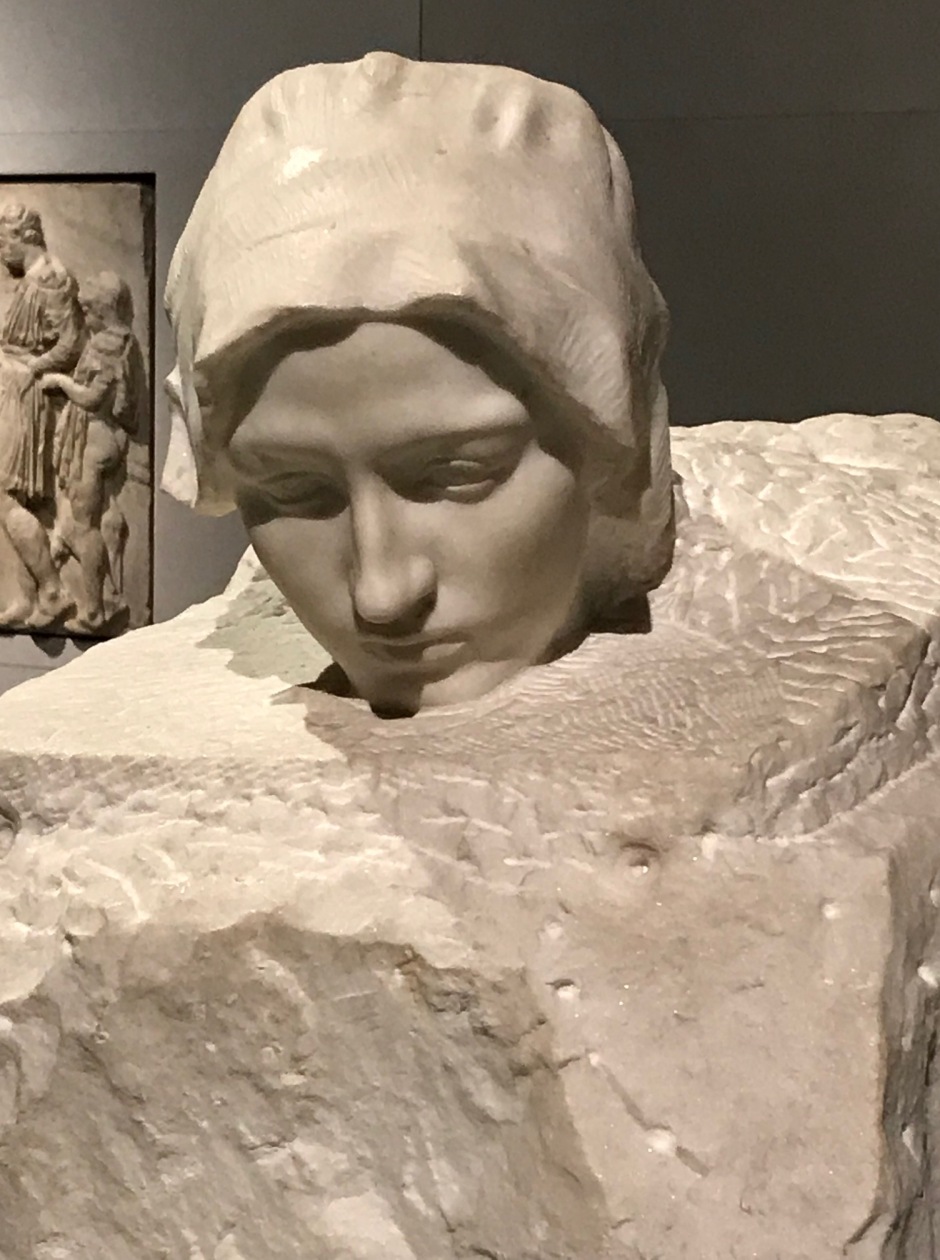
There is something slightly peculiar about this exhibition. The basic premise is that Auguste Rodin (1840-1917) never visited Greece. But at the age of 40, when he visited London for the first time, he went to the British Museum and started a life-long obsession with the sculpture of Ancient Greece, and particularly of the Parthenon. The Elgin Marbles, taken from the Parthenon, had been given to the British Museum and formed the core of what remains a hugely impressive collection of Ancient Greek artefacts.
Following this premise the exhibition places works by Rodin beside the Greek originals that had inspired them and shows just how extensively Rodin drew on these sources in his work. But the problem with this is two-fold. Firstly, the best Rodin work in this exhibition does not seem to me to draw particularly from Greek originals. And indeed it is not entirely clear that Rodin was as drawn to Greek sculpture as is implied. Certainly the reference work about Rodin which I have, published a few years before this exhibition, makes no reference to this. He did of course collect ancient Greek and Roman artefacts in later life, but the view seems to be that he was a mediocre collector.
The second difficulty is that the comparisons drawn between the sculptures from the Parthenon and by Rodin are not very flattering. There is much to admire in Rodin’s sculpture and in particular his ability to convey tension and emotional intensity through plaster and bronze. But if you want to enjoy Rodin you might be better staying away from this exhibition because his work is continually upstaged by the Greek originals. Examples of the iconic Rodin pieces, The Kiss and The Thinker, are both included in the exhibition but they look mass-produced and sterile compared to the Parthenon friezes they are exhibited beside.
As a whole, the exhibition is worth a view, if only to be able to get a better view of selected Parthenon sculptures than is normally possible. But at £17 entrance fee, there are other exhibitions in London at the moment that you will find more stimulating. And by the way, I think it is poor form that the exhibition catalogue is only available in hardback at £35 a copy. I know times are hard, exhibitions are expensive and museums and galleries must do what they must. But on this occasion I feel that the British Museum has over-stepped the mark.
